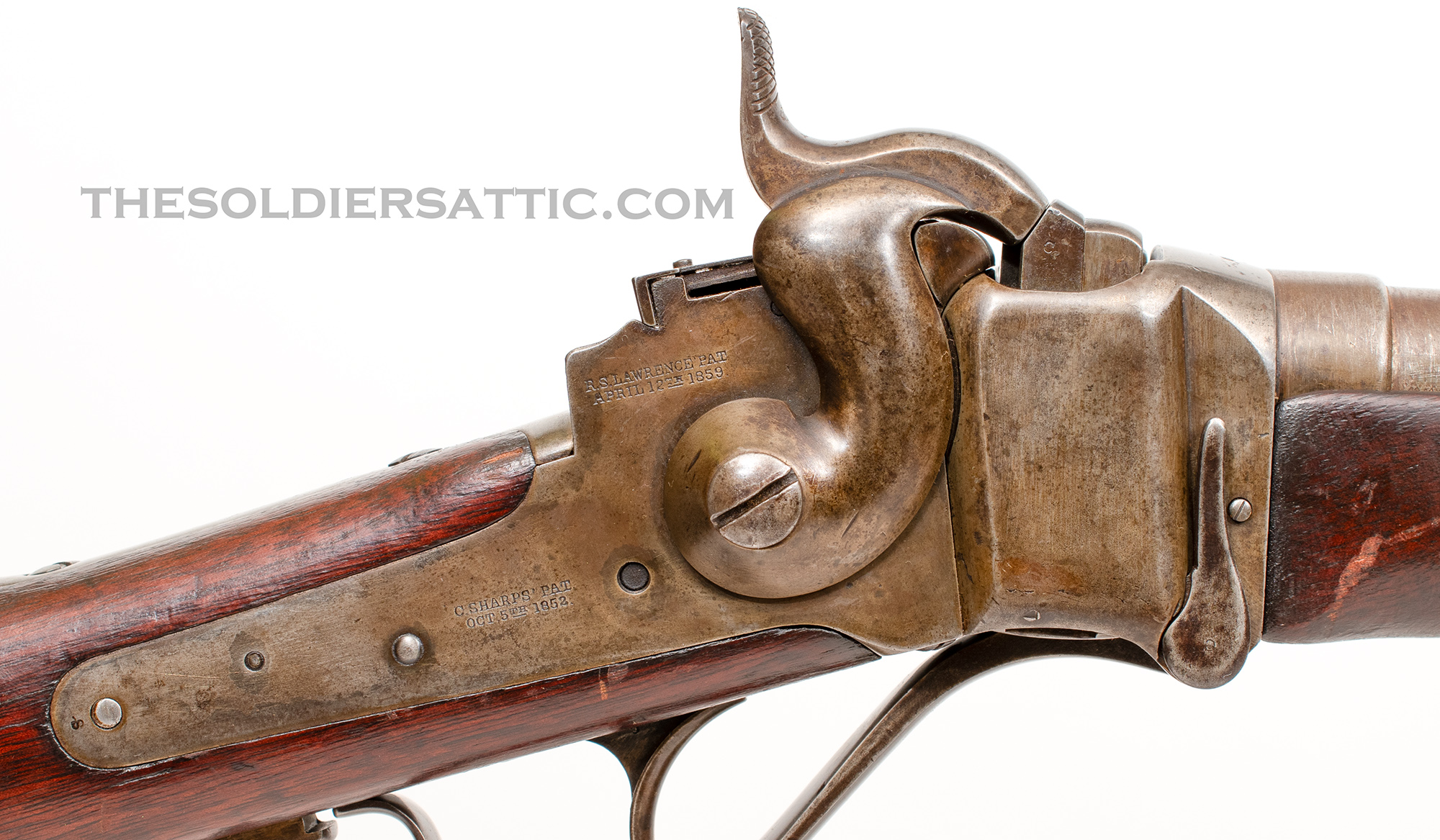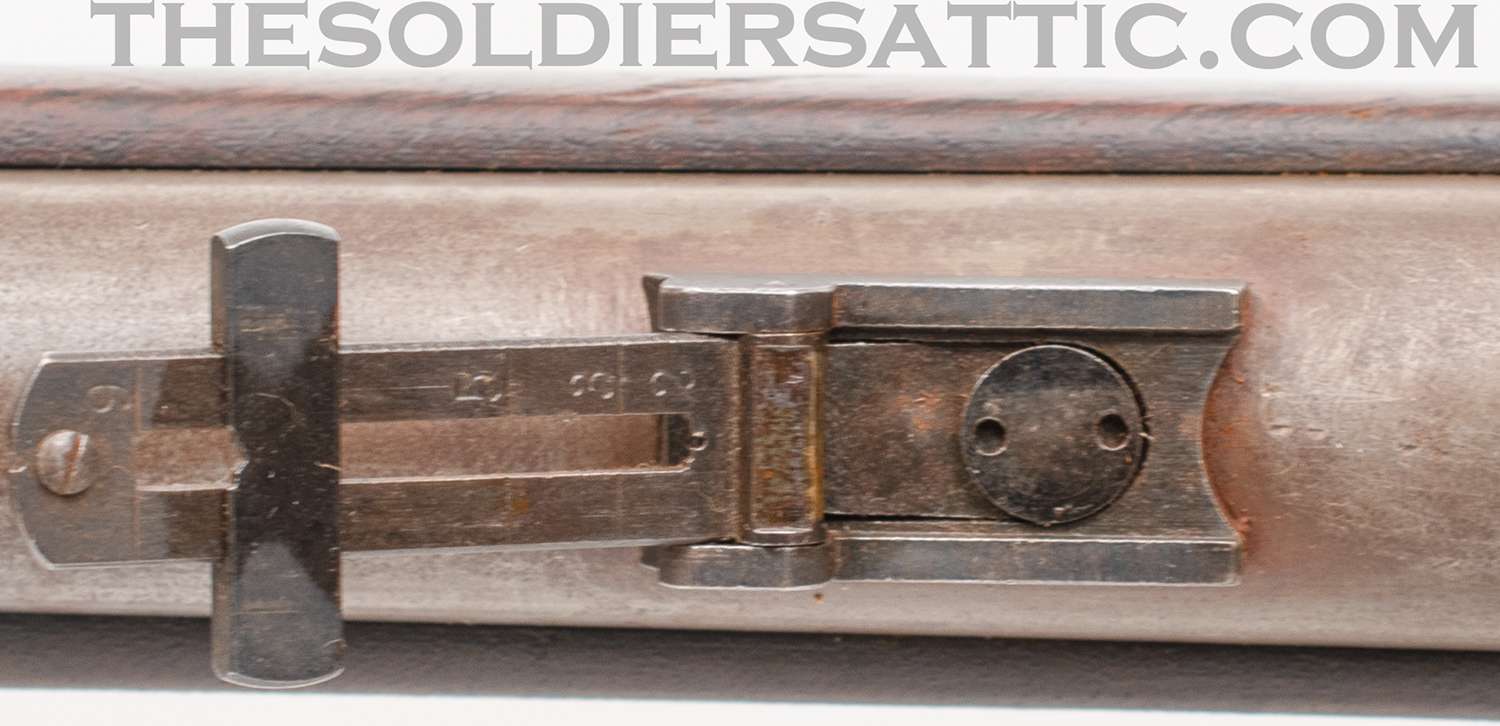Breechloading arms made an impressive debut during the Civil War and in the following years, the US military began a search for a standard issue breechloading firearm to replace the obsolete muzzleloading firearms that were in predominate use at the end of the war. Facing budget restrictions common in post war years, the US Army Ordnance Department turned its attention to the vast store of percussion arms at its disposal for conversion to breechloading systems that utilized metallic cartridges.
Erskine S. Allin, Master Armorer at the Springfield Armory, designed the Springfield “Trapdoor” rifle and these were the first and probably best-known arms produced during the early conversion efforts. However, the Ordinance Department originally only planned for the Trapdoor design to be a temporary measure, and in the coming years sought other solutions for metallic cartridge breechloading firearms. This search ended with the 1870-1873 trials that tested four different proposed rifle models. Two of these, the Remington patented rolling block Model 1870 rifle, and the Ward-Burton Model 1871 rifle, were completely new actions that had seen little to no military use. In fact, the Ward-Burton was the first modern bolt action rifle issued to US troops (see our post on the Ward-Burton carbine). The other two models, the Springfield Model 1870 trapdoor rifle and the Springfield-Sharps Model 1870 rifle utilized actions already deployed during and after the Civil War. All trials models were chambered for .50-70 Government centerfire. During the trials these arms were issued to a handful of units contending with conflict among western tribes along the frontier and therefore saw rigorous field use.
Although conversions of straight breech M1859 and M1863 rifles were underway at the Sharps Rifle Manufacturing Company, the US Army Ordnance Department determined that a cheaper conversion could be made at the Springfield Armory and therefore, as with all trail rifle models, the Springfield-Sharps Model 1870 was a product of the National Armory. As with the other three models, total production of the Springfield-Sharps amounted to approximately 1300 rifles and 300 carbines.
All Springfield-Sharps M1870 Type I rifles employ a cam-operated firing pin, modified hammer nose contour that meets the cam without any overhang, the by then standard M1870 rear sight and ramrod, and a 35-inch barrel secured with two-barrel bands. Springfield re-lined barrels (if wear exceeded .5225 inches), modified surplus walnut musket stocks, made their own small parts as required, and dipped into their stores of surplus small parts, such as butt plates and barrel bands, throughout the conversion process. During the field trials, troops found that the original percussion levers did not impart enough force to consistently eject spent cases. As a result, Springfield ordered new levers from Sharps that did not have the roller and, instead, were reinforced in a way that applied more force to the extractor. The new levers were installed on the rifles in the field and used for the remaining conversions at the armory.
At the time the new levers were ordered, Springfield also purchased 300 new receivers and lock plates without the pellet priming system (the forerunner of the M1874) from Sharps. These parts were used to assemble the final 300 rifles, which are collectively referred to as the M1870 Type II and are serial numbered in their own range.
After sifting through all the field reports produced during the 1870-1873 trials, the Ordnance Department deemed the Springfield Model 1970 Trapdoor the preferred rifle over the other three models. With the M1870 Trapdoor becoming the standard military issue rifle for the US military (and eventually evolved into the Trapdoor line that continued until the 1890s adoption of the Krag bolt-action rifle), stores of the other trial rifle models were surplussed and eventually sold to firms such as Schuler, Hartley & Graham. From there they found their way to Europe and the Franco-Prussian War before eventually returning to the US and sold on the consumer market. As a result of the history of heavy field use, exportation, and reimportation, finding these trails rifles (of any model) can be difficult, particularly in good condition.
Find more information and pictures of our Springfield-Sharps Model 1870 Type I rifle on our listing here.





